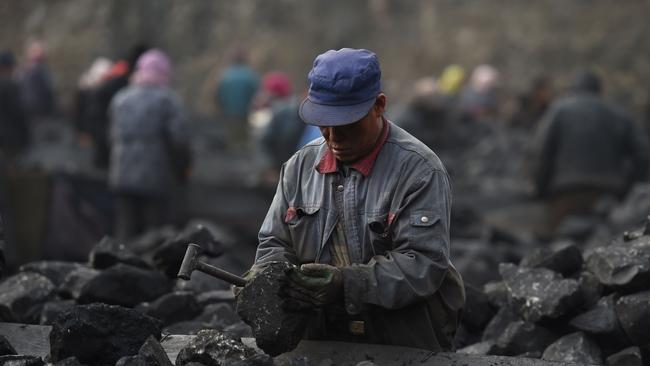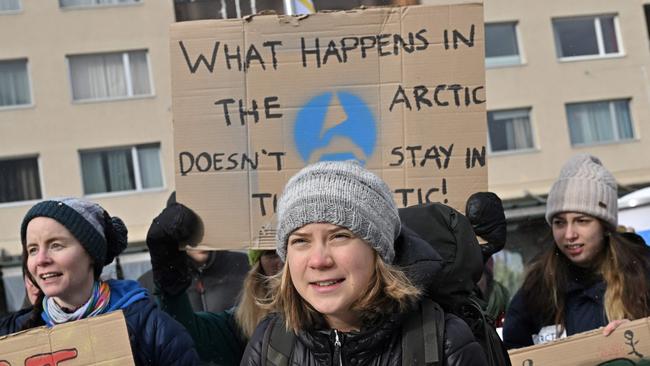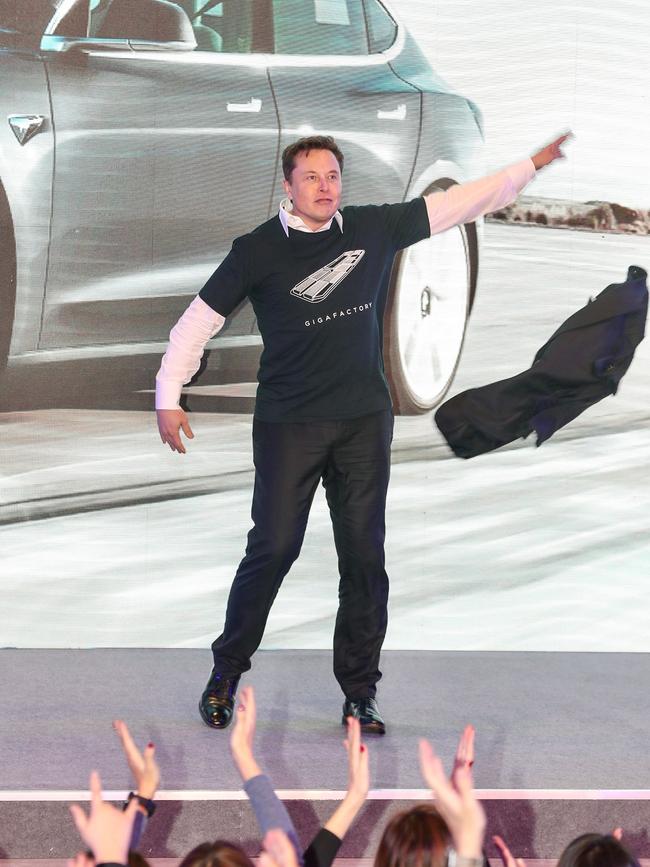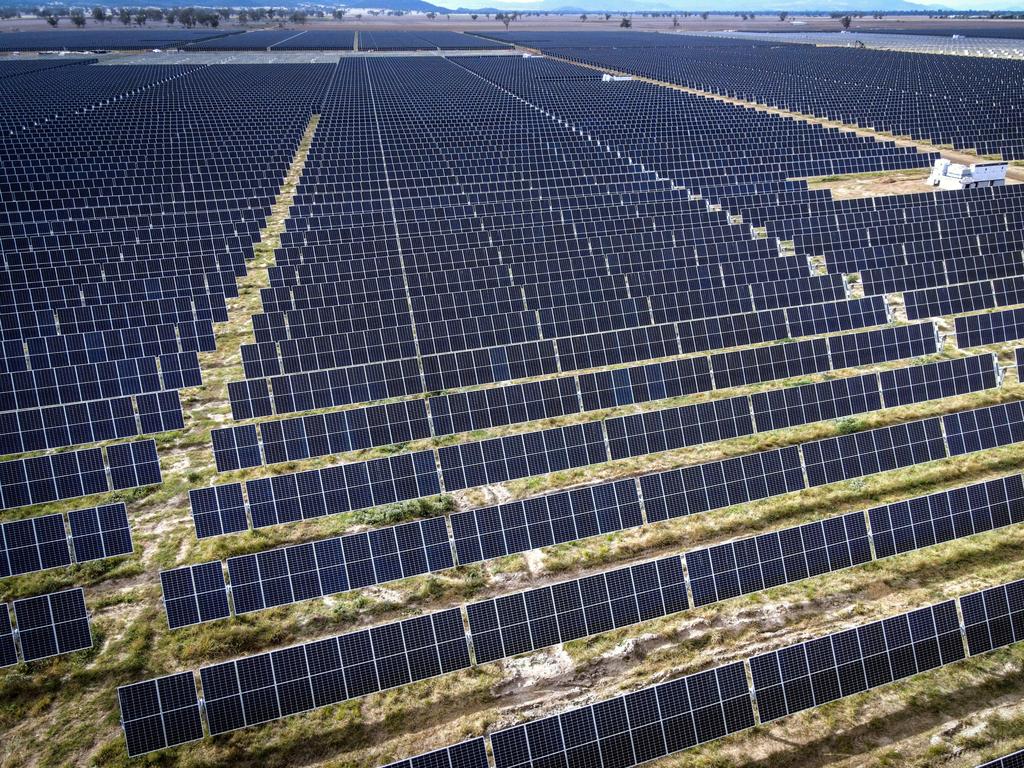Emission impossible: net zero emissions is a toxic fantasy
We must stop fooling ourselves; the chances of achieving the earthly paradise of net zero in this lifetime are … zero.

– Senator Matt Canavan, former minister for resources
“We instead continue to participate in the fantasy of net zero.”
–Academics James Dyke, Robert Watson and Wolfgang Knorr in Concept of Net Zero is a Dangerous Trap
“I am scared almost more by the consequences of net zero, than by those of climate warming.”
–Wolfgang Knorr
“Complete decarbonisation of the global economy by 2050 is conceivable only at the cost of unthinkable economic retreat, or as a result of extraordinarily rapid transformations relying on near-miraculous technical advances.”
– Vaclav Smil, How the World Actually Works
Net zero, to use the first great climate change metaphor, hasn’t got a snowflake’s chance in hell. It’s a fraudulent concept. It’s not real. It requires an heroic leap of faith, magical thinking. It cannot exist in the physical universe.
Yet it’s the centre of Australian national policy. All our state governments are signed up to it. Net zero pledges of one kind or another – albeit often over timeframes which recall a Star Trek voyage more than a policy commitment – cover, notionally, two thirds of the global economy.
But it’s akin to the ancients’ determination to slay dragons – dragons don’t exist.
This is not an argument against taking action to reduce greenhouse gas emissions. The academics Dyke, Watson and Knorr, quoted above, want radically more action to reduce emissions now because they think the idea of net zero in the ways currently envisaged is completely implausible.
Canavan, by contrast, is one of the strongest critics of the economic cost of the actions we’re now taking.

It’s only at those two ends of the debate where you get honesty on net zero, from climate activists who recognise that none of what’s going on now will get the world anywhere near net zero so we must be more radical, and sceptics who say the cost of what we’re doing is exorbitant and won’t even achieve our objectives.
Net zero is like heaven, although there’s much less evidence for its existence than heaven’s. Christians live in the hope of heaven, but understand they won’t reach it in this life. Just now, official policy in many countries is captured by a millennial delusion – these are not uncommon, around the year 1000 many people thought the world was about to end – that we can achieve the earthly paradise of net zero in this lifetime.
What does net zero mean?
It’s the idea that the world gets its total greenhouse emissions – now about 40 billion tonnes annually – down to a manageably small amount and then, by wondrous technology, takes carbon back out of the atmosphere equal to that still being emitted.
I am slightly overstating things by saying it’s absolutely impossible. It is possible if you believe in miracles. Miraculous technology may emerge which can extract vast amounts of carbon. Such technologies don’t exist today and are not in prospect. Today, net zero is impossible.

It fails at every part of the equation. There are technologies which can extract carbon but none can operate on a scale, and at a cost, which could do the job.
It also fails at the earlier hurdle of getting emissions down to a minor level. There is simply no prospect of this globally, or even within Australia. That’s not a counsel of despair.
We can reduce greenhouse gases a lot. But policy should be based on reality. There is no sign of reductions on a huge scale.
Before we get to the technical, let’s examine the geopolitical, which is almost always ignored in climate hot gospelling. According to the Climate Action Tracker website, the top 12 national emitters in order are: China, the US, India, Russia, Japan, Iran, Germany, Saudi Arabia, Indonesia, South Korea, Canada and Brazil.
China alone emits 30 per cent of global greenhouse gases, a third more than the US and the EU combined. China, India and Russia emit more than twice the US and EU combined. China, India, Russia, Iran, Saudi Arabia, Indonesia and Brazil emit half of the world’s greenhouse gases. Not one of them is a Western nation. Not one is gripped by climate politics remotely like the dynamics that dominate Europe, Australia and North America.
China is “committed” to net zero by 2060. India, now the largest nation in the world, and the fastest-growing economy in the world, is “committed” to net zero by 2070 (about the time Australia gets its first nuclear powered submarine). These societies are going to develop, come what may. They are not going to decarbonise at anything like the rate Europe, the US or Australia envisages for our societies.
In truth, neither are we. BP, like all big, publicly listed Western resources companies, sincerely and energetically pursues its climate change credentials. Its annual energy outlook charts three climate pathways. In its most wildly optimistic scenario, with an unbelievable 95 per cent decline in greenhouse emissions, BP still expects fossil fuels to account for 20 per cent of primary energy in 2050. That’s obviously inconsistent with net zero.
However, in BP’s more realistic scenario, the current trajectory, fossil fuels account for 55 per cent of primary energy in 2050. That is as far from net zero as you could imagine. It still represents a big change in the global energy profile. At the start of this decade, fossil fuels represented 80 per cent of primary energy.
All serious analysis reaches similar conclusions to BP. The only way you can get to net zero analytically is to declare that net zero will be achieved by 2050 and then work back to how the world got there. But that “getting there” process involves the most fantastical magical thinking about both politics and technology.
The price of coal today reflects the reality BP is if anything understating. As of writing, the price of thermal coal was about $US247 a tonne, down from a super high of $US372 a month ago. Europe has had an unseasonably warm winter. But even this price is extremely robust. In 2015, coal was down below $US60 a tonne.
Consider India. The International Energy Agency says that over the next 40 years, India will need to add additional electricity equal to the entire electricity system of the European Union. You really think that’s going to be a net-zero enterprise? If you do, I’d like to sell you the Sydney Harbour Bridge, it’s going cheap.

The IEA also claims India would need additional investment of $US1.4 trillion to produce an energy system that conformed to the 1.5C Paris global warming target.
Then there’s our old friend China. As I’ve written before, it operates 1100 coal-fired power stations and has nearly 200 more on the books, with 90-odd under some stage of construction.
Coal is declining as a percentage of Chinese energy but coal-based Chinese emissions continue to rise overall and will do so for many, many years.
China alone makes net zero impossible. Climate Action Tracker also publishes a world map with different shades of colour for countries acting in accordance with the Paris pledge, and various levels of failure. As far as I can see on the map there is not a single territory or country which is acting compatibly with the Paris target.
All of this is a straightforward account of just a tiny fraction of the reasons the world is not going to decarbonise on anything like the scale Western policymakers now claim.
But the truth is, even if it did, net zero is technically impossible. One of the big ways of decarbonising is to switch from internal combustion to electric vehicles. There are 1.4 billion cars around the world.

If we substituted them for 1.4 billion electric vehicles we would actually be no better off in greenhouse gas emissions. How can this be? Well, a regular car is easy to make, easy to run, and gives off carbon when it’s running. An electric car involves very difficult minerals, especially in the car battery, including cobalt, copper, lithium, graphite, nickel, manganese. Most of these ingredients are far more energy intensive to mine than the stuff used in regular cars. It requires a huge energy to blast them out of their host ores.
Volvo recently conducted a carbon neutrality study. It found that when you count all the greenhouse gases involved in the construction of an electric vehicle, it emits, over the course of its life, fewer greenhouse gases than a normal car only after it has travelled about 150,000 km.
Given that Australians on average travel a bit over 13,000km per year in their car, it’s not until 10 years after they get their EV that they are in positive territory on net emissions. And will an EV last for 10 years, especially given how quickly the batteries deteriorate?
A world of 1.4 billion electric vehicles cannot be a net-zero world, and that’s not even considering the monumental amounts of electric capacity that would need to be constructed all over the world.
But the conceptual objections to net zero are more fundamental than that. Serious scientists, and indeed those imbued even with common sense who look at it seriously, conclude that all the means of capturing carbon and taking it out of the atmosphere cannot possibly be scaled up to a sufficient level where net zero comes within the remotest possibility.
This is the thesis of a very useful paper by the already cited Dyke, Watson and Knorr.
Carbon capture and storage was once the big thing. The idea is you use coal for energy and then capture the carbon on the way out, pump it underground and store it there for thousands of years.

This is technically possible. It has been done on a demonstration basis. It is so ludicrously expensive, and energy intensive, that it’s not in operation anywhere commercially.
There are machines which can just grab carbon out of the air. These machines exist. But they are so expensive and power intensive that they can never make a big contribution.
The only hope was Bioenergy Carbon Capture and Storage. This means essentially planting huge numbers of trees for commercial use, growing them quickly, cutting them down and using them for biofuel, then growing new ones. While the trees are growing, they store carbon.
But there just can never be enough of such trees. As Dyke, Watson and Knorr observed, BECCS would need to remove more than 12 billion tonnes of carbon per year, and that’s on the most benign assumptions. There just aren’t enough trees or arable land. The academics wrote: “The two most efficient biofuels are sugarcane for bioethanol and palm oil for biodiesel. Endless rows of such fast growing monoculture trees or other bioenergy crops harvested at frequent intervals devastate biodiversity.”
But in any event, they argue, to work at that scale would require somewhere between 25 per cent and 80 per cent of all the land currently under cultivation. And, they rightly ask, how can the world do that and feed a global population already at eight billion and steadily heading towards nine billion or more?
Consider the crazy expectations we have for biofuel. Global aviation fuel is already in the range of 100 billion gallons a year. The US non-aviation fuel requirement is around 120 billion gallons a year. You really think there’s going to be that much biofuel?
Even among the seeming true-believer political leaders, the net-zero declarations often contain sneaky escape clauses. Thus US president Joe Biden issued a ringing proclamation, a presidential executive order, that US government energy would become net zero.

But deep down in this statement, towards the very end, are several paragraphs saying that any use for national security, for defence equipment, or even support equipment, is exempt from the order. And guess what, it turns out that 75 per cent of US government energy use is for the military.
The IMF, which is extremely keen to make net-zero ambitions sound plausible and even appealing, calculates that the Albanese government’s commitment to a 43 per cent emissions reduction by 2030 would cost every Australian household $4500 each year.
Recently there have been riots in France over Emmanuel Macron’s attempt to raise the retirement age from 62 to 64. Does that sound like an electorate keen to absorb the massive costs of decarbonisation, much less than fork out huge quantities of aid to finance decarbonisation among the majority world emissions in developing and other non-Western countries?
None of this is to say do nothing about climate change, don’t reduce emissions substantially.
But policy is generally better if it operates in the real world on the basis of real solid facts. Net zero, like perfect charity, like our nuclear submarines perhaps, like heaven itself, remains the stuff of prayers and dreams. I’m all for prayers and dreams. But in this world, policy should concern itself with facts.







“In all this stuff, we live by lying now. We tell ourselves lies and we know we’re lying to ourselves.”